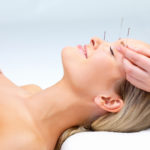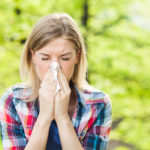How Do You Treat Exercise-Induced Asthma?
What are some possible treatments for exercise-induced asthma?
Andrew Weil, M.D. | March 8, 2010

Originally published February 4, 2002. Updated March 8, 2010.
Exercise can trigger asthma symptoms. This is true even in people who don’t otherwise suffer from the condition, and physical activity can induce symptoms in up to 80 percent of those who do have asthma. Coughing, wheezing, shortness of breath, or tightness in the chest usually come on after exercise, although these symptoms can also occur soon after you begin to work out. Fortunately, you can help address problems with exercise by taking some simple pharmaceutical precautions to prevent or minimize symptoms. Here’s a rundown of your medication options provided by my colleague, John Mark, M.D., a pediatric pulmonary specialist at Stanford University medical Center who treats asthma in both adults and children:
- Albuterol: A short-acting bronchodilator that’s inhaled 15 to 20 minutes prior to exercise and that protects against symptoms for about four to six hours.
- Salmeterol and Formoterol: These long-acting bronchodilators are effective in protecting against exercise induced asthma if taken 30 minutes or so before exercising. However, formoterol has a quicker onset. Both of these bronchodilators carry an FDA “black box” warning that they may increase the risk of asthma-related death. Neither one should be used as the only therapy for asthma, Dr. Mark said.
- Montelukast (Singulair): A drug that blocks the action of leukotrienes in the lungs, resulting in less constriction of bronchial tissue and less inflammation. Leukotrienes are one of several classes of chemical messengers produced in the body that can trigger bronchial constriction and inflammation. Montelukast is available in pill form and is taken the night before you exercise.
- Cromolyn (Intal): An anti-inflammatory drug inhaled 15 to 20 minutes before exercising that prevents the release of histamines and leukotrienes. It’s most useful in asthma when an allergic component is present.
In addition to medication, the following natural approaches can help you prevent or minimize symptoms:
- Warm up very slowly to the point where you almost feel the “tightness” associated with exercise-induced asthma. Then stop and stretch or, if you’re exercising vigorously, slow down. By taking this break, you often can block the development of asthmatic symptoms. You can then go back to your normal pace. This may take some getting used to, but can possibly eliminate the need for medication.
- Try breath work. The most effective approaches are pranayama techniques (breath control exercises taught in some yoga classes). You can do these after the initial warm-up when symptoms are almost felt. For beginners, start with “The Relaxing Breath,” a technique which I also describe in my books.
- Find a form of physical activity that minimizes your exercise-induced symptoms. Sports or activities that have intermittent rest periods (such as tennis, softball, and golf) can allow you to regain control of your breathing. Swimming may be better than running outdoors in cold weather, but no type of exercise is off-limits with proper treatment. In fact, some of the world’s top athletes have exercise-induced asthma, and they’re still able to compete successfully in Olympic-level events.
Andrew Weil, M.D.










